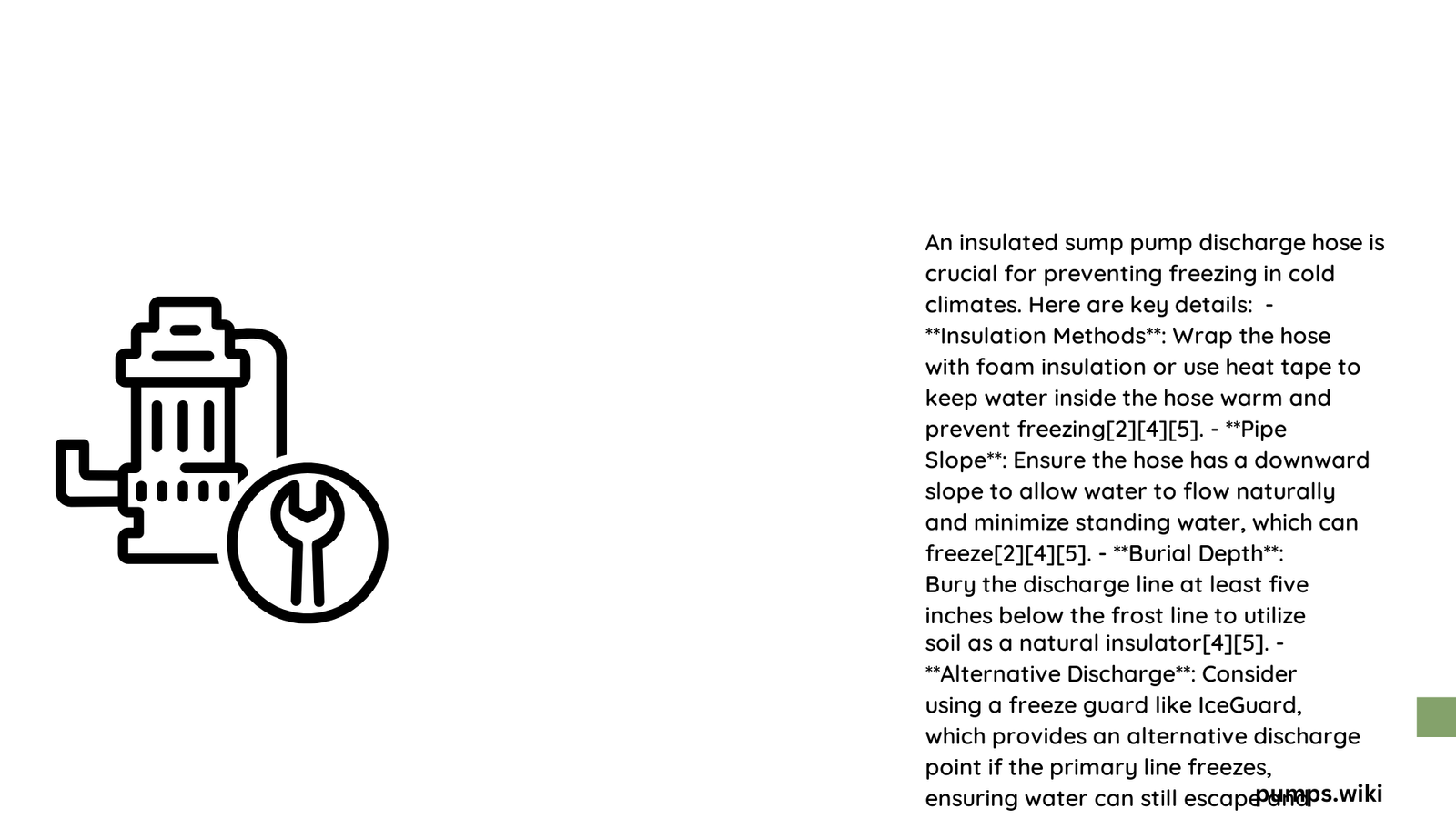An insulated sump pump discharge hose is a critical component in basement water management systems, designed to efficiently redirect water away from your home’s foundation while providing thermal protection against temperature fluctuations. These specialized hoses prevent freezing, reduce condensation, and ensure consistent water flow, making them essential for homeowners in regions with variable climate conditions.
What Makes an Insulated Sump Pump Discharge Hose Unique?
Insulated sump pump discharge hoses differ from standard drainage pipes through their specialized construction and protective features. Unlike traditional hoses, these are engineered to:
- Maintain consistent water temperature
- Prevent freezing in cold environments
- Reduce condensation buildup
- Provide enhanced durability
What Are the Key Technical Specifications?
| Specification | Typical Range |
|---|---|
| Diameter | 1.25″ – 1.5″ |
| Length | 24 – 36 feet |
| Material | Polyethylene |
| Insulation Type | Foam/Rubber Coating |
How Do Temperature Variations Impact Performance?
Temperature plays a crucial role in sump pump discharge hose functionality. Different environmental conditions can significantly affect the hose’s performance:
- Cold Climates:
- Risk of freezing increases
- Potential water flow restriction
-
Higher likelihood of pipe damage
-
Hot Climates:
- Potential material degradation
- Increased thermal expansion
- Potential reduction in structural integrity
What Materials Provide Best Insulation?
Manufacturers typically use several materials for insulation:
- Polyethylene Foam: Lightweight, excellent thermal barrier
- Rubber Coating: Provides additional moisture resistance
- Closed-Cell Foam: Superior insulation properties
- Neoprene Wrapping: Enhanced durability and temperature protection
How to Select the Right Insulated Discharge Hose?
When choosing an insulated sump pump discharge hose, consider:
- Local climate conditions
- Basement water volume
- Discharge distance requirements
- Compatibility with existing sump pump system
What Installation Techniques Ensure Optimal Performance?
Proper installation is critical for maximum efficiency:
- Ensure minimal bends and turns
- Maintain consistent downward slope
- Use appropriate mounting brackets
- Seal connections securely
- Avoid excessive horizontal runs
What Maintenance Practices Extend Hose Lifespan?
Regular maintenance helps preserve your insulated discharge hose:
- Inspect for cracks or wear annually
- Clean interior to prevent sediment buildup
- Check insulation integrity
- Replace every 5-7 years or as manufacturer recommends
What Are Potential Challenges?
Homeowners might encounter:
- Freezing in extreme cold
- Reduced water flow with long discharge runs
- Potential material degradation
- Installation complexity
Expert Recommendations

Professional plumbers suggest:
– Choose hoses with UV-resistant properties
– Prioritize thickness of insulation
– Consider professional installation for complex systems
Cost Considerations
Prices range from $50 to $250 depending on:
– Length
– Insulation quality
– Brand reputation
– Additional features
Final Thoughts
An insulated sump pump discharge hose represents a strategic investment in home water management. By understanding its technical nuances and maintaining it properly, homeowners can effectively protect their property from water damage.
